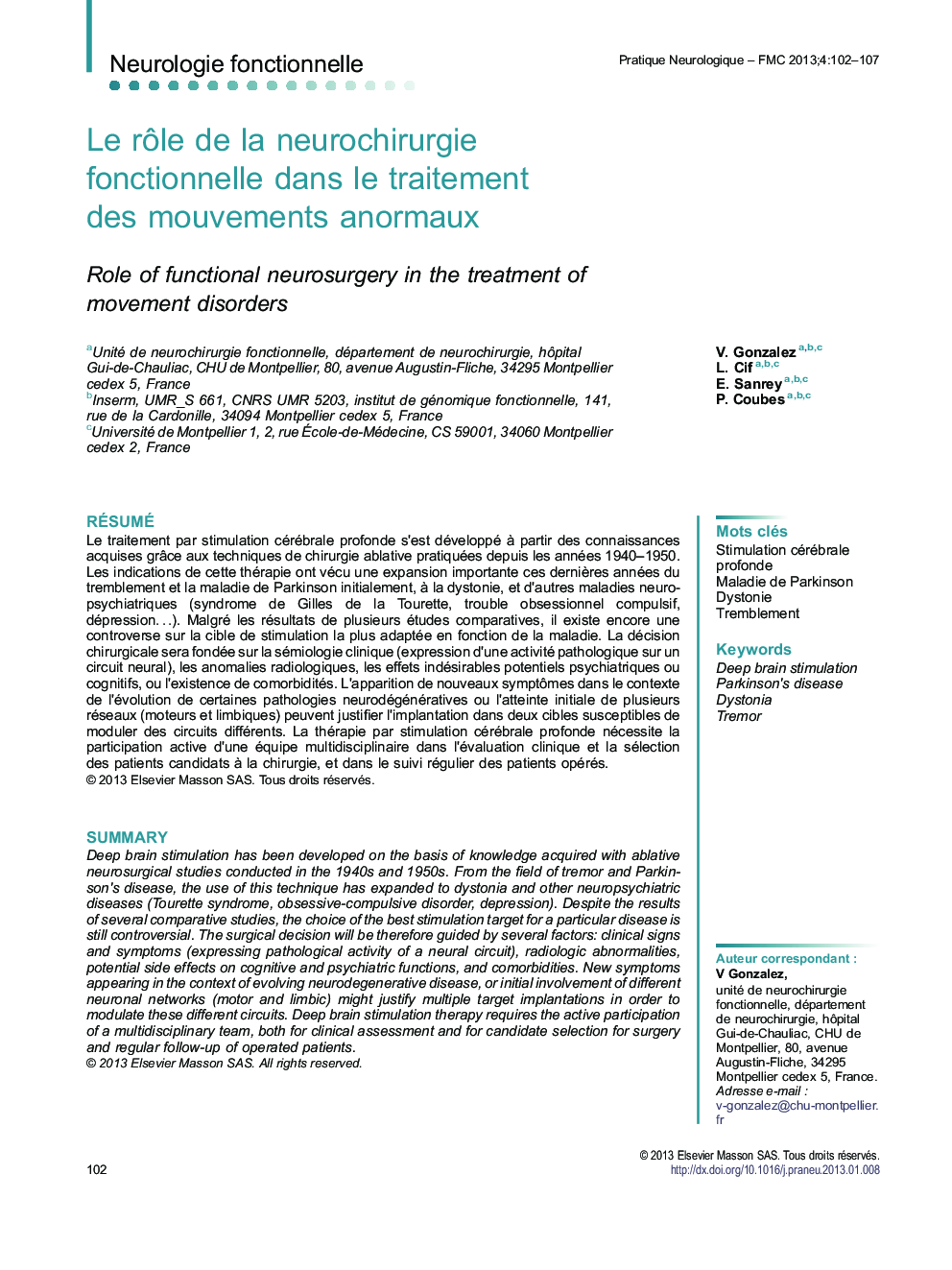| Article ID | Journal | Published Year | Pages | File Type |
|---|---|---|---|---|
| 3087255 | Pratique Neurologique - FMC | 2013 | 6 Pages |
Abstract
Deep brain stimulation has been developed on the basis of knowledge acquired with ablative neurosurgical studies conducted in the 1940s and 1950s. From the field of tremor and Parkinson's disease, the use of this technique has expanded to dystonia and other neuropsychiatric diseases (Tourette syndrome, obsessive-compulsive disorder, depression). Despite the results of several comparative studies, the choice of the best stimulation target for a particular disease is still controversial. The surgical decision will be therefore guided by several factors: clinical signs and symptoms (expressing pathological activity of a neural circuit), radiologic abnormalities, potential side effects on cognitive and psychiatric functions, and comorbidities. New symptoms appearing in the context of evolving neurodegenerative disease, or initial involvement of different neuronal networks (motor and limbic) might justify multiple target implantations in order to modulate these different circuits. Deep brain stimulation therapy requires the active participation of a multidisciplinary team, both for clinical assessment and for candidate selection for surgery and regular follow-up of operated patients.
Keywords
Related Topics
Life Sciences
Neuroscience
Neurology
Authors
V. Gonzalez, L. Cif, E. Sanrey, P. Coubes,
